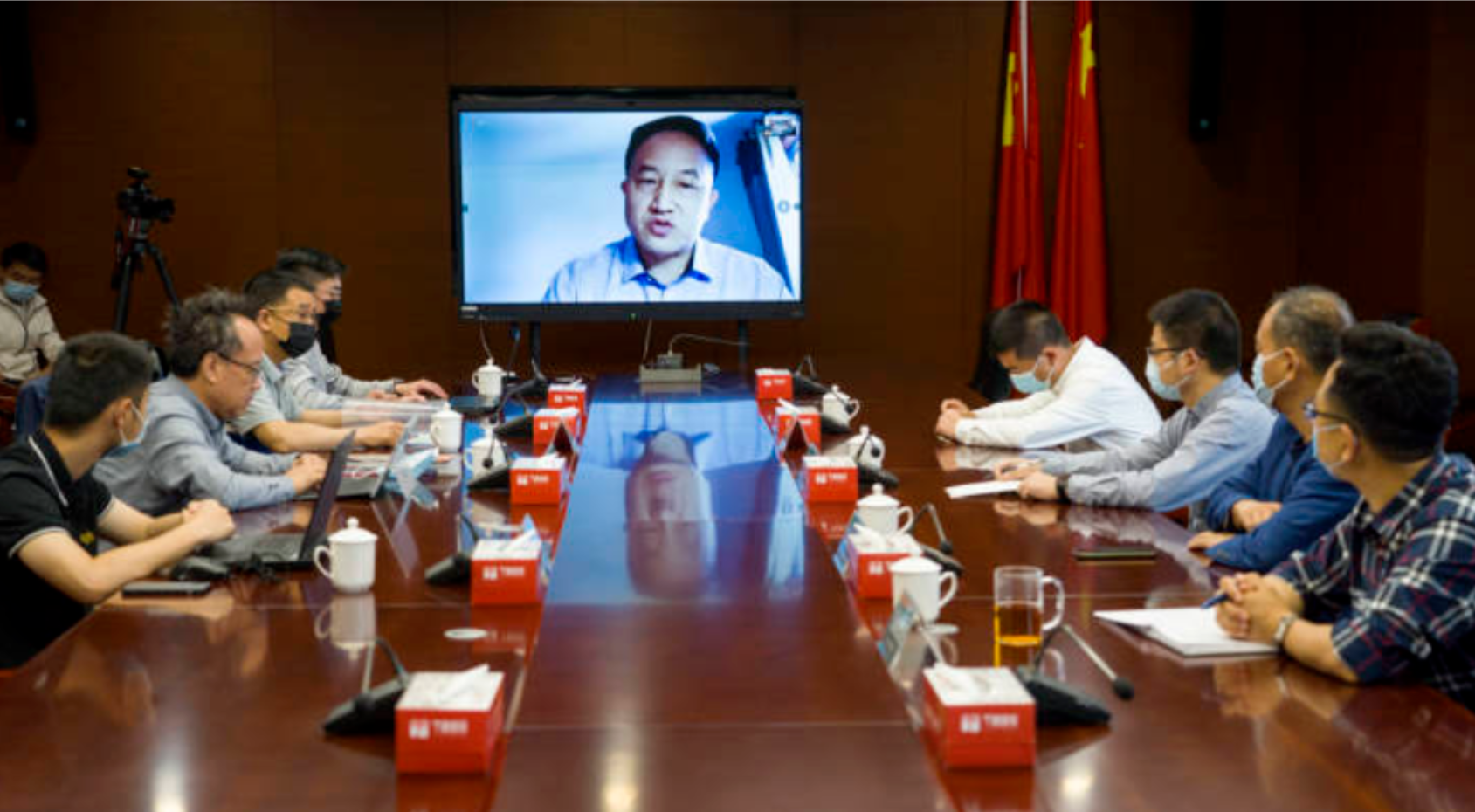
The First International Competition on Modern Bamboo Structure Building Design rounded off on May 13th. The competition was organized by Zhejiang University - University of Illinois at Urbana-Champaign Institute (ZJUI), Zhejiang University (Ninghai) Joint Research Center for Bio-Based Materials and Carbon Neutral Development, China Wood Protection Industry Association, the American Society of Civil Engineers (ASCE), and Engineered Bamboo Structures task committee. Under the strategic goals of "carbon peak" and "carbon neutrality", the competition provided creative possibilities for application of bamboo structure on modern building. Prof. CUI Kai, member of Chinese Academy of Engineering, Prof. Liu Jiaping, member of Chinese Academy of Engineering, Prof. Spencer, B., foreign member of Chinese Academy of Engineering, and other domestic and foreign experts in the field of architecture were invited to participate in the evaluation through video conference. Finally, the first prize was won by South China Agricultural University and Nanjing Tech University. The second and third prizes were awarded to teams from ten universities at home and abroad, including the Ethiopian College of Architecture, the University of Auckland from New Zealand, and Southeast University from China. What is worth mentioning is that the entry ‘loft without Autumn’ won the innovative design award, which was designed by LI Xinyang, YU Yingying and LE Zhiyuan, ZJUI freshmen in civil engineering, CUI Xiaotong, ZJUI freshmen in electrical engineering, and DONG Siyi from Imperial College London, ZJUI 2021 civil engineering graduate.
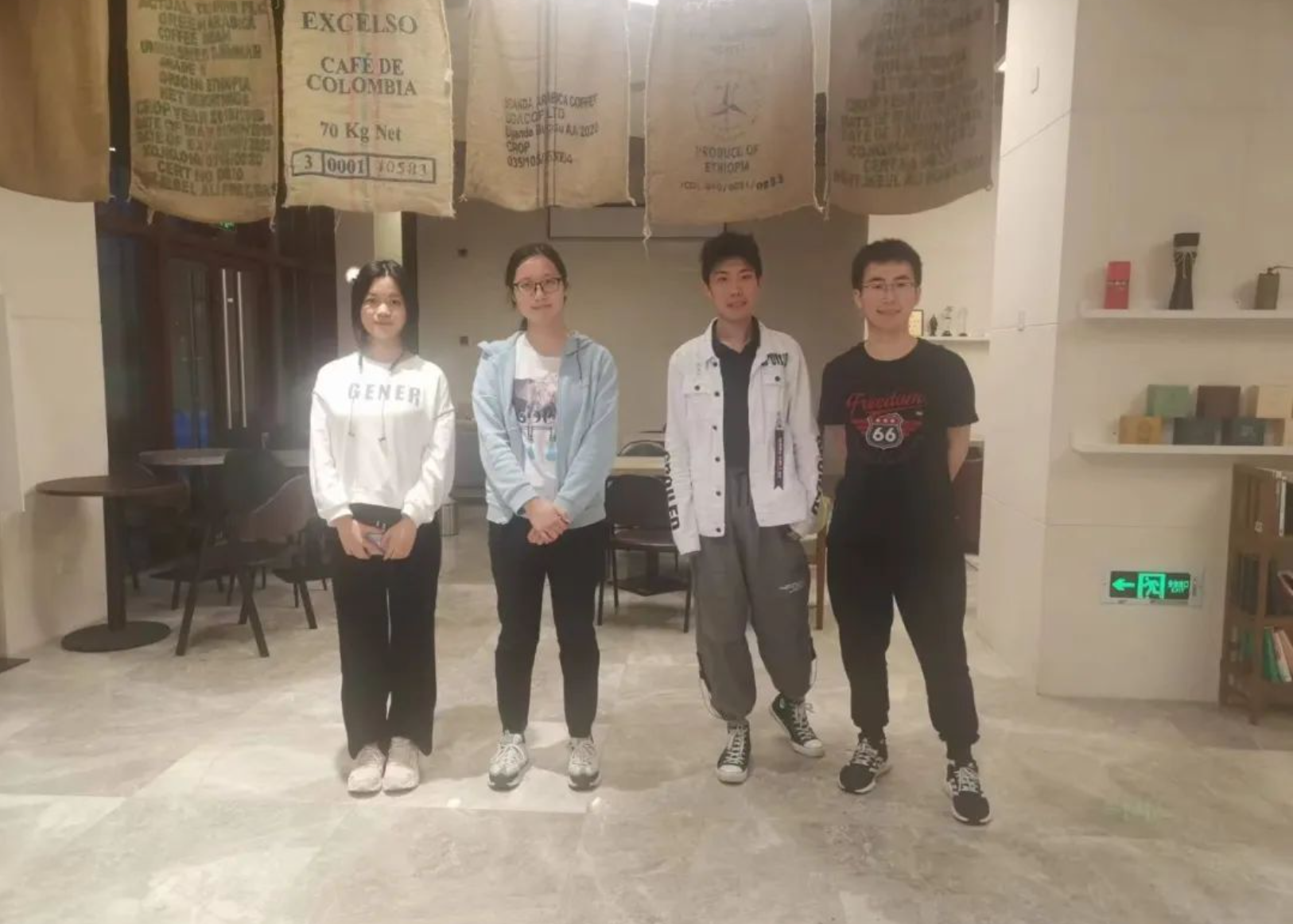
▲ From left: CUI Xiaotong, YU Yingying, LI Xinyang, LE Zhiyuan
Having been awarded in such an international competition within the first several months in their college, LI Xinyang's team shared, "Although we are freshmen students and we don’t have abundant professional knowledge and expert skills, we hope to make up for our shortcomings and broaden our knowledge scope through diligent study and careful planning. We also hope to actively contribute to the ‘double carbon' goal in our country." As they said, their project carefully considered the architectural environment and background according to local conditions, deeply analyzed the distribution of the residents and their living needs, and comprehensively analyzed the structural forces, deflection, earthquake resistance, wind resistance, and loads of the house from the perspective of safety. In order to help the residents to better implement the concept of energy conservation and environment protection, they even provide some suggestions for the residents about green life, to truly achieve sustainable environmental protection goals in a long term.
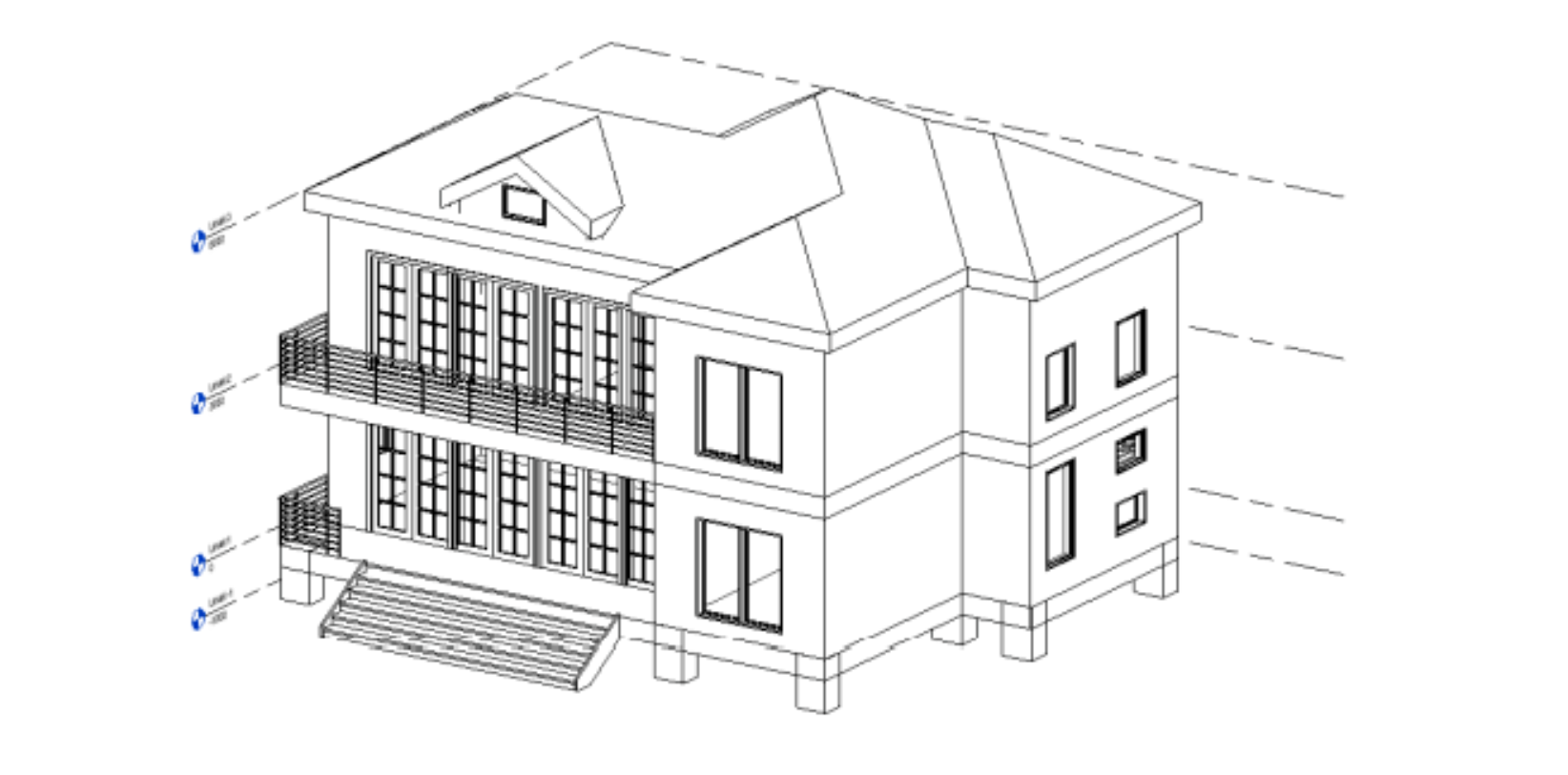
▲ 3D Model of ‘loft without Autumn’
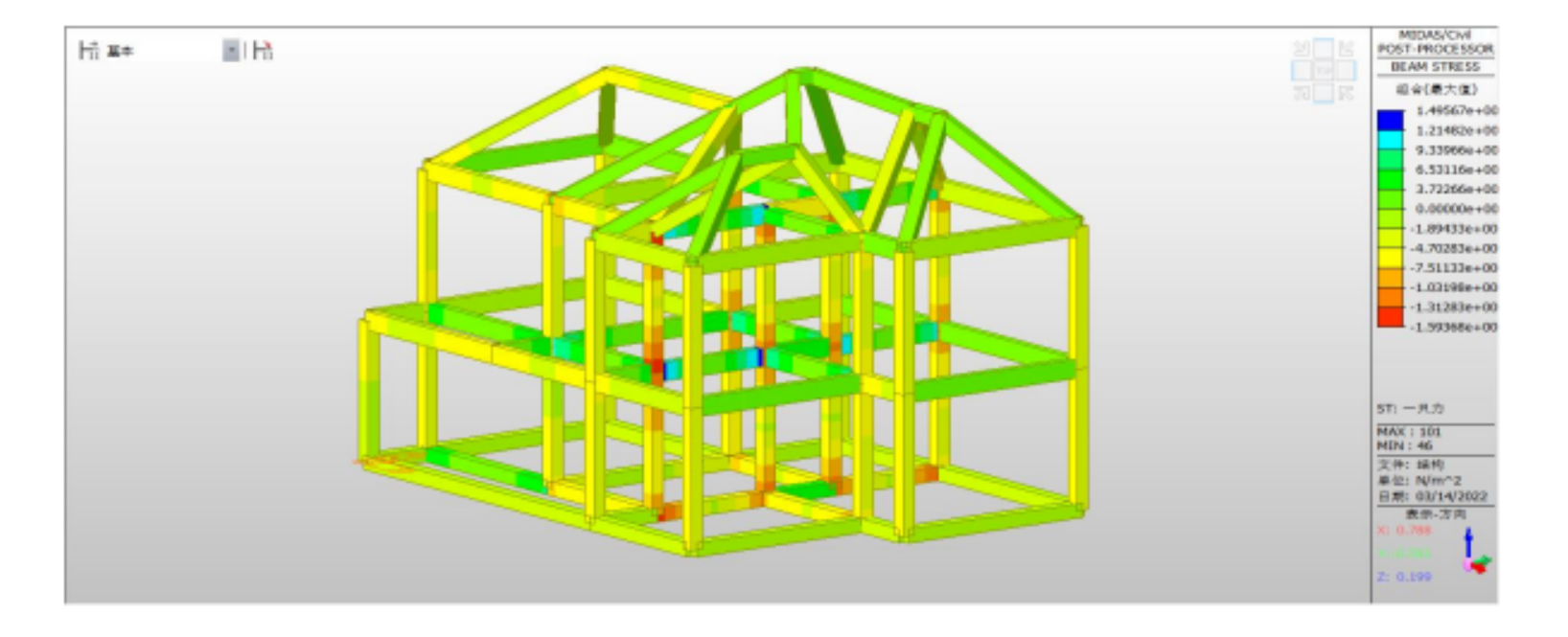
▲ Stress Analysis of "loft without Autumn"
In the structural designing process, LI Xinyang's team applied BIM (Building Information Modeling) technology, making the entire designing process more scientific through digital technology, and even reaching the goal of energy conservation and environment protection in the design phase. At last, they obtained their optimal solution with relatively low carbon emission and high economic efficiency under the condition of structural health and safety.
Since the competition kicked off last December, more than 200 teams from more than 50 universities globally, including Southeast University in China, National University of Singapore and University of Auckland from New Zealand, registered to participate. Finally, 71 pieces of work were received. After communication evaluation by domestic and foreign experts, 24 pieces of work were recommended to be reviewed in joint meeting.
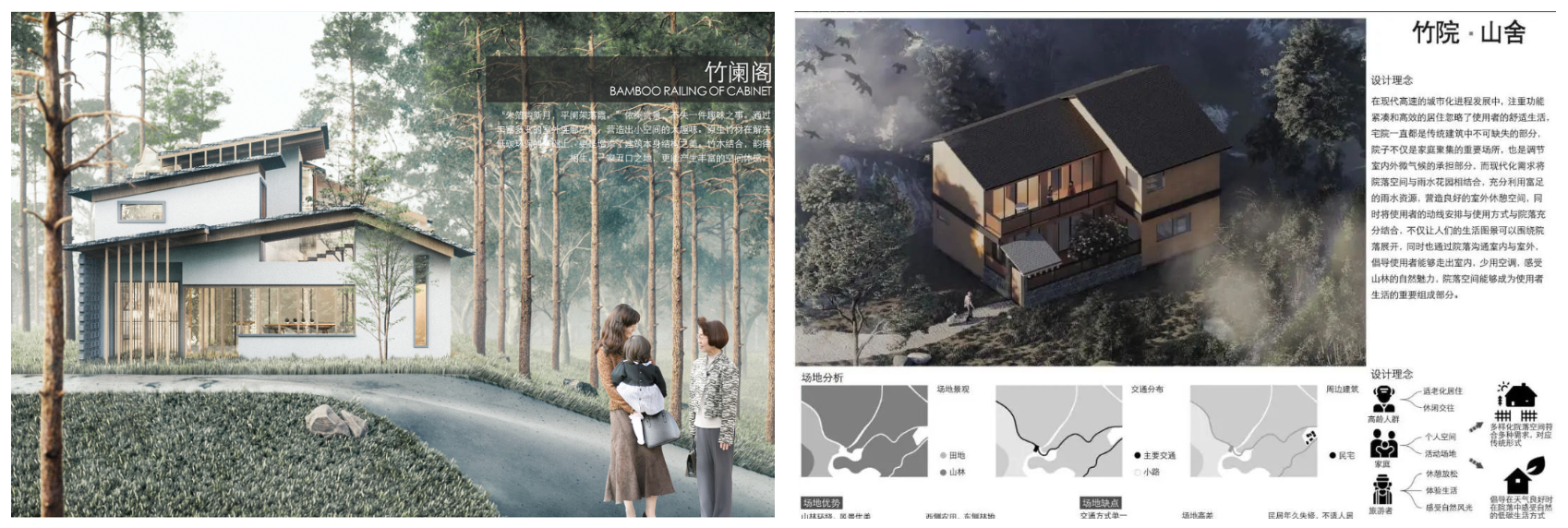
▲ First prize winning works
Bamboo is a kind of natural material, degradable and renewable, with high strength, good toughness and delicate texture. Promoting the R&D and application of bamboo is conducive to achieve the "double carbon" goal in the construction industry. ‘We selected a village in Ninghai as the scene of the competition, which is halfway up the mountain, with insufficient sunlight and inconvenient transportation and where most of the villagers migrated to cities to earn a living, and only a few elderly people lived. The reasons why we chose the village are as follows: firstly, Ninghai possesses the abundant bamboo resources and the relatively mature bamboo and wood processing industry base. Secondly, we hoped that through the competition, the design will be implemented as a real project and it will play an exemplary role in improving local rural housing, developing industries, encouraging villagers, especially young villagers, to return to their hometowns to start businesses, and rebuilding a beautiful village that is livable and workable. ‘said XIAO Yan, Qiushi Chair Professor, Zhejiang University, professor of ZJUI, director of Zhejiang University (Ninghai) Joint Research Center for Bio-Based Materials and Carbon Neutral Development, director of organizing committee for the First International Competition on Modern Bamboo Structure Building Design. He also said, ‘We hoped that these simple low-carbon living design will provide Ninghai and even the whole country with references to use biomass bamboo and wood materials reasonably, further develop biomass material engineering structures and promote energy saving and emission reduction in the construction industry. The topic of this design competition is somewhat different from those previous competitions which emphasized artistry more. This competition centered more on the integration of architectural design and structural design and the comprehensiveness in multiple disciplines including carbon footprint calculation, which is of high difficulty. Fortunately, we are glad to see that so many student teams from home and abroad have participated and submitted designs with creativity and professional skills. We are particularly pleased that several of our ZJUI teams were able to overcome the difficulties of lack of subject knowledge, develop ideas and open their minds, and dare to challenge with a fresh spirit. It also shows that the students not only accumulated knowledge, but also mastered certain methodologies for learning and engineering innovation. "
It is known that some of the awarded works will be applied to the Ninghai Village Reconstruction Project, implemented by the Zhejiang University (Ninghai) Joint Research Center for Bio-Based Materials and Carbon Neutral Development together with Ninghai City Investment Group and other corporations.







